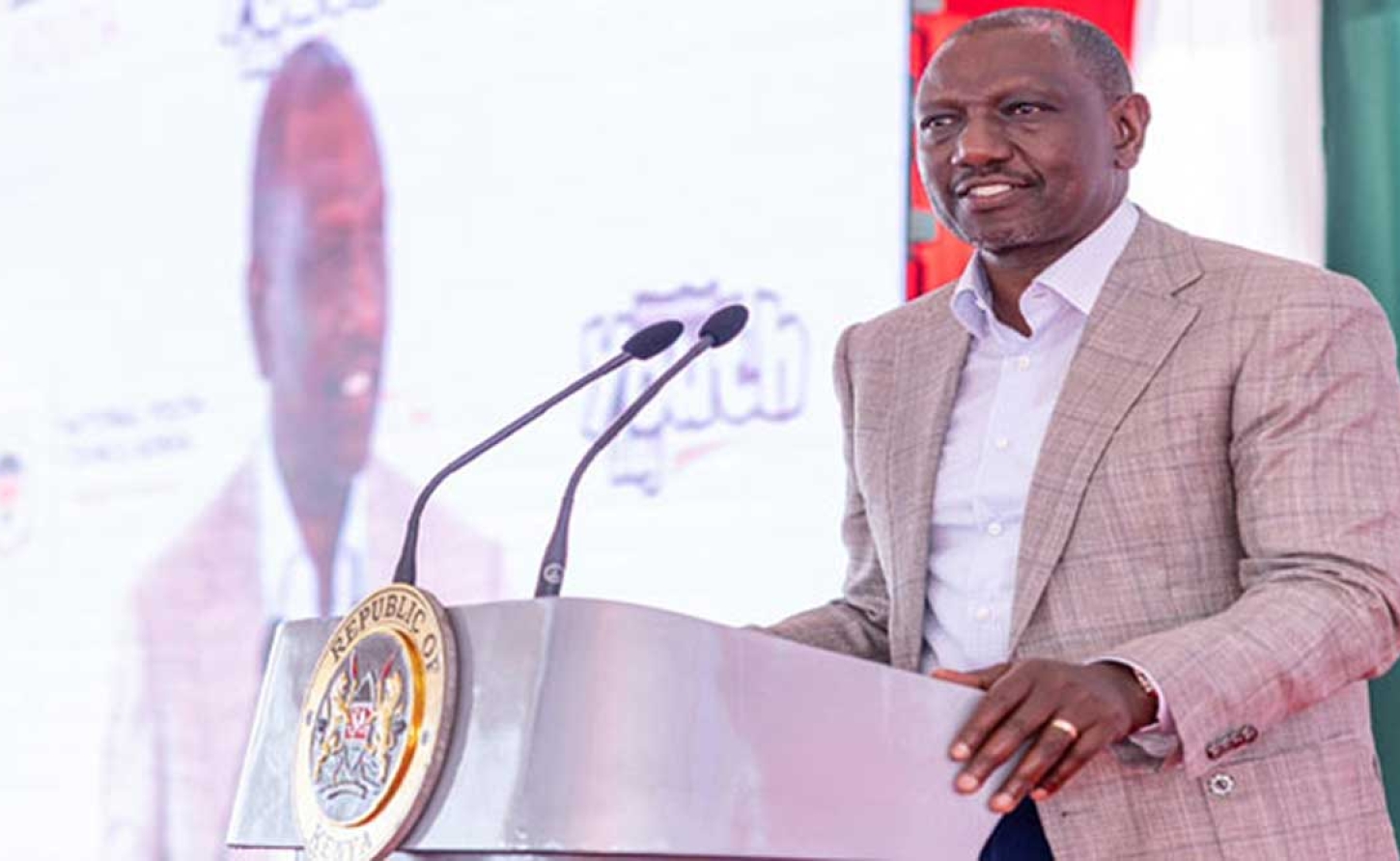AFRICA | Beyond the Protests: Can Kenya Turn Youth Anger Into Economic Opportunity?

As interviews begin for 100,000 youth entrepreneurs, questions mount over whether economic opportunities can address deeper grievances
On Monday, October 13, 2025, officials across Kenya began interviewing young entrepreneurs for the National Youth Opportunities Towards Advancement (NYOTA) programme—a KSh5 billion initiative promising to distribute KSh50,000 (US$388) grants to 100,000 youth.
For President William Ruto's administration, the programme represents a concrete response to months of youth-led protests. For Kenya's Gen Z population, it's a test of whether their government can deliver substance after a year of tragedy and broken trust.
The timing is unavoidable. NYOTA launches just three months after Saba Saba Day protests on July 7 left 41 people dead, including 12-year-old Bridgit Njoki, killed by a stray bullet while watching television in her home.
The demonstrations followed June's anniversary protests marking a year since the Finance Bill 2024 uprising, which itself claimed over 60 lives.
From Streets to Strategy
The Finance Bill protests forced the government's hand in unexpected ways. What began as opposition to proposed tax increases evolved into a leaderless, digitally-organized movement demanding broader accountability.
Gen Z activists, backed by millennials, orchestrated nationwide civil disobedience that ultimately forced withdrawal of the controversial legislation.
But the movement's catalyzing moment came with Albert Ojwang's death. The 31-year-old teacher and blogger died in police custody on June 8, two days after his arrest for allegedly defaming Deputy Inspector General Eliud Lagat on social media.
Police initially claimed Ojwang hit his head against a cell wall; an autopsy revealed extensive trauma consistent with torture. The contradiction between official statements and medical evidence deepened public distrust in institutions.
NYOTA emerges from this context—a World Bank-backed attempt to channel youth frustration into economic opportunity. The question facing both government and citizens is whether programmatic responses can address grievances rooted in accountability and justice.
The Architecture of Ambition
NYOTA's structure goes beyond simple handouts. The programme combines three elements: business grants with training and mentorship, Access to Government Procurement Opportunities (AGPO) for youth-led enterprises, and On-the-Job Experience (OJE) placements targeting 90,000 participants.
Media researcher Dr. Hesbon Owila, analyzing the programme's potential, identifies AGPO as the most significant component.
"Public tenders should not remain the preserve of a connected urban elite," he argues. "Extending procurement access to youth in remote and rural areas can stimulate local economies, create jobs where people live and build a sense of inclusion."
The OJE component addresses a practical reality: not every young person is suited for entrepreneurship. For those pursuing formal careers, workplace experience offers skills development and employment pathways that grants alone cannot provide.
President Ruto framed NYOTA as recognizing youth potential rather than viewing young people as problems to be managed. "We want to harness their energy, talent, and expertise to transform our nation," he said during the programme's announcement.
The Implementation Challenge
Yet Kenya's history with youth programmes creates justified skepticism. Previous initiatives—the Constituency Development Fund, National Youth Service programmes, the Youth Enterprise Development Fund—have faced accusations of political capture and, in some cases, corruption scandals.
Dr. Owila acknowledges the stakes plainly: "AGPO will only work if processes are transparent, paperwork is simplified, and payments are timely." Each of these requirements represents a significant institutional challenge in Kenya's procurement system, known for bureaucratic delays and patronage networks.
The geographic equity question looms large. Will youth in remote areas like Nyikendo in Suna East receive the same consideration as applicants in Nairobi or Nakuru?
The programme's credibility depends partly on demonstrating that opportunity extends beyond politically connected urban centers.
For the OJE component, the selection criteria will prove crucial. Merit-based placement versus political patronage represents a fundamental choice that will signal whether NYOTA operates as genuine reform or traditional patronage in new packaging.
The Parallel Accountability Track
What makes NYOTA's rollout particularly complex is its intersection with ongoing justice questions. The Independent Policing Oversight Authority documented 20 deaths in police custody during just four months of 2025. Three police officers face murder charges in Ojwang's death, but broader accountability for protest violence remains incomplete.
Youth activists have made clear that economic opportunity and justice accountability are not competing priorities—they're complementary demands.
The protests that shut down Nairobi combined frustration over economic exclusion with rage over state violence. NYOTA addresses the first; the second remains largely unresolved.
International pressure continues mounting. The African Commission on Human and Peoples' Rights, along with the EU, U.S., and U.K., have called for transparent investigations into custody deaths and protest violence.
President Ruto has acknowledged these concerns while defending his administration's response.
The Measurable Test
Dr. Owila proposes a straightforward evaluation framework: within one year, Kenyans should see tangible results—formalized trading kiosks, village enterprises supplying schools and clinics, completed apprenticeships, timely AGPO payments reaching rural accounts.
These outcomes would demonstrate whether NYOTA functions as intended. Their absence would confirm skeptics' fears that the programme represents political theater rather than institutional reform.
The broader question extends beyond Kenya. Across the Global South, governments face similar youth demographic pressures—large, educated, digitally-connected populations confronting limited economic opportunities.
NYOTA offers a test case in whether programmatic responses can effectively channel youth energy while addressing deeper governance challenges.
For now, interviews proceed in Kenya's 290 sub-counties. One hundred thousand young entrepreneurs will apply, argue their cases, and wait for decisions that could reshape their economic futures.
Whether those decisions prove transparent, equitable, and truly transformative will determine NYOTA's legacy—and potentially, the trajectory of Kenya's youth-government relationship.
The programme's name means "star" in Swahili. Whether NYOTA illuminates a path forward or becomes another dimmed promise depends on execution, transparency, and the political will to match rhetoric with institutional reform.
-30-

 En
En  Ar
Ar